Pedra do Sapo EarthCache
-
Difficulty:
-

-
Terrain:
-

Size:  (other)
(other)
Please note Use of geocaching.com services is subject to the terms and conditions
in our disclaimer.
Pedra do Sapo - a erosão
Stone Toad - erosion

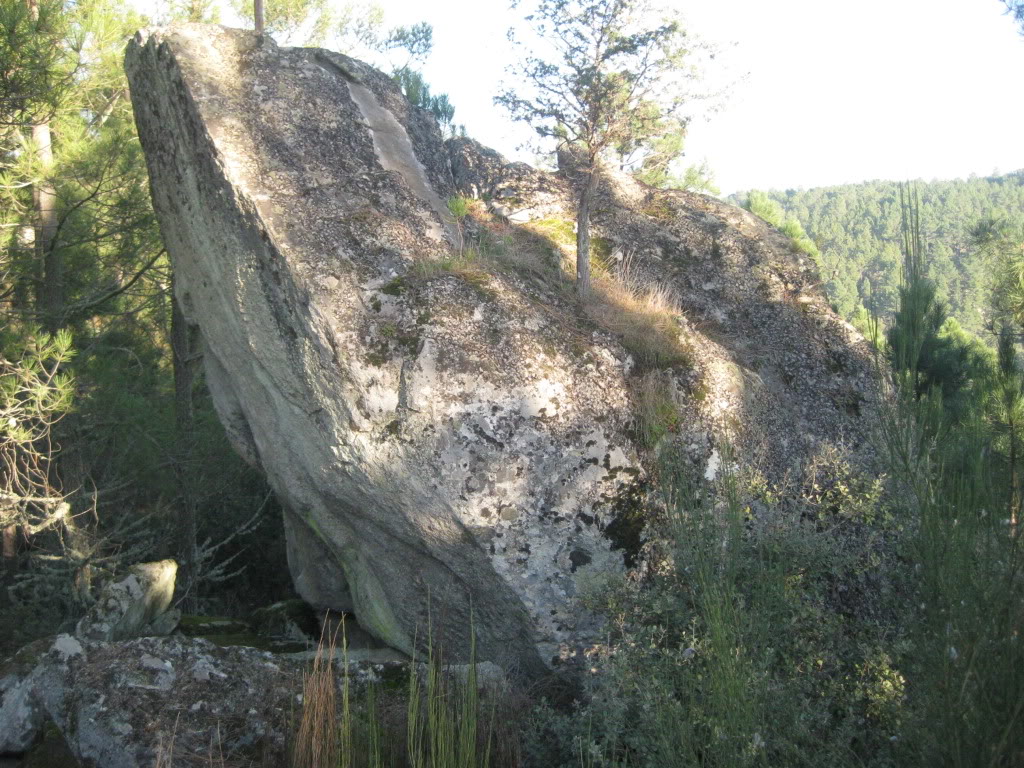 (PT) A erosão
(PT) A erosão
A erosão é um fenómeno que implica a remoção do material de um lugar para o outro, com intervenção de diversos agentes (agentes de erosão), razão pela qual a Terra vai lentamente modificando o seu aspeto.Nem sempre é fácil compreender como a Terra, que aparentemente é tão firme e sólida, se altera em muitos aspetos. Sobre ela atuam a água, o vento, a neve, o ar húmido, a temperatura, os seres vivos, etc.A erosão não atua continuamente sobre um primeiro e único relevo. Os agentes internos são construtivos, trabalham alternadamente com os agentes externos com tendência a estabelecer o equilíbrio. São os agentes internos que contribuem para a formação de novos relevos subjacentes aos perfis da superficie terrestre. É a fase de orogénese. A seguir, os agentes externos atuam com toda a energia, tendendo a nivelar os relevos. É a fase erosiva ou gliptogénese. O material resultante da meteorização que se mantém desagregado no local de origem está sujeito a diversas forças. Umas são passivas ou protetoras, como a resistência das rochas aos agentes geológicos, cuja variabilidade depende dos componentes da rocha e do cimento que as liga. A altitude a que se encontra a rocha também é um fator que influencia a erosão, considerando-se o nível do mar como o ponto zero da erosão, isto é, o local onde esta se detém, não prosseguindo a partir desse nível. Outras forças são ativas ou destrutivas. Entre estas considera-se a gravidade, que tende a fazer cair todos os corpos na direção do centro da Terra, a atração lunar, que provoca as marés e os deslocamentos periódicos das grandes massas de água, e a radiação solar, que é um conjunto muito variado de radiações luminosas, caloríficas, elétricas, magnéticas, corpusculares, etc. Estas são consideradas forças puras ou primárias. A erosão tende a reduzir gradualmente as zonas salientes e a transformar a superfície em peneplanícies (ciclo de erosão). Os produtos de desagregação podem ficar no próprio lugar ou próximo dele, contribuindo para a formação do solo. Alguns são deslocados a maior ou menor distância. Podem ser transportados em suspensão ou em dissolução na água.
Tipos de erosão
Erosão pluvial:é provocada pela retirada de material da parte superficial do solo pelas águas da chuva. Esta ação é acelerada quando a água encontra o solo desprotegido de vegetação. A primeira ação da chuva se dá através do impacto das gotas d'água sobre o solo. Este é capaz de provocar a desagregação dos torrões e agregados do solo, lançando o material mais fino para cima e para longe, fenômeno conhecido como salpicamento. A força do impacto também força o material mais fino para abaixo da superfície, o que provoca a obstrução da porosidade (selagem) do solo, aumentando o fluxo superficial e a erosão. Necessário se faz em separar claramente as ravinas formadas somente por erosão superficial das formadas pelo processo de erosão remontante. A ação da erosão pluvial aumenta à medida que mais água da chuva se acumula no terreno, isto é, a retirada do solo se dá de cima para baixo. Na erosão remontante acontece exatamente o contrário: a retirada do material se dá de baixo para cima, como é o caso das boçorocas. Uma ravina de origem pluvial pode progredir em direção a uma boçoroca, mas não necessariamente. Da mesma forma podemos ter a progressão de boçorocas independente da erosão pluvial, pois esta depende do fluxo subterrâneo e não do fluxo superficial. Muitos autores e textos didáticos têm erroneamente confundido estes fenômenos. Separá-los, no entanto, não é somente uma questão de rigor científico, mas uma necessidade prática, pois as formas de se combater um processo erosivo dependerá de que tipo de erosão estamos enfrentando. Muitos processos indicados para evitar ou combater erosão pluvial, não funcionam quando se trata de combater erosão remontante, principalmente nos casos em que amplas boçorocas já estão instaladas na paisagem. As principais formas de erosão pluvial são: a) erosão laminar: quando a água corre uniformemente pela superfície como um todo, transportando as partículas sem formar canais definidos. Apesar de ser uma forma mais amena de erosão, é responsável por grande prejuízo às terras agrícolas e por fornecer grande quantidade de sedimento que vai assorear rios, lagos e represas.
Erosão eólica:Ocorre quando o vento transporta partículas diminutas que se chocam contra rochas e se dividem em mais partículas que se chocam contra outras rochas. Podem ser vistas nos desertos na forma de dunas e de montanhas retangulares ou também em zonas relativamente secas.
Erosão marinha:é um longo processo de atrito da água do mar com as rochas que acabam cedendo transformando-se em grãos, esse trabalho constante atua sobre o litoral transformando os relevos em planície e deve-se praticamente à ação de um fator presente na termodinâmica: a convecção dos ventos, responsáveis pelo surgimento das ondas, correntes e marés . Tanto ocorre nas costas rochosas bem como nas praias arenosas. Nas primeiras a acção erosiva do mar forma as falésias, nas segundas ocorre o recuo da praia, onde o sedimento removido pelas ondas é transportado lateralmente pelas correntes de deriva litoral. Nas praias arenosas a erosão constitui um grave problema para as populações costeiras. Os danos causados podem ir desde a destruição das habitações e infra-estruturas humanas, até a graves problemas ambientais. Para retardar ou solucionar o problema, podem ser tomadas diversas medidas de protecção, sendo as principais as construções pesadas de defesa costeira (enrocamentos e esporões) e a realimentação de praias. Em Portugal, na região de Aveiro, vive-se atualmente uma situação preocupante. A estreita faixa costeira que separa o mar da laguna, está perigosamente perto da ruptura. Se esta se verificar para além de várias populações serem afectadas, irá ocorrer uma drástica mudança na salinidade da laguna, afectando todo o ecossistema.
Erosão quimica:Envolve todos os processos químicos que ocorrem nas rochas. Há intervenção de fatores como calor, frio, água, compostos biológicos e reações químicas da água nas rochas. Este tipo de erosão depende do clima, em climas polares e secos, as rochas se destroem pela troca de temperatura; e em climas tropicais quentes e temperados, a humidade, a água e os dejetos orgânicos reagem com as rochas e as destroem.
Erosão glacial:As geleiras (glaciares) deslocam-se lentamente, no sentido descendente, provocando erosão e sedimentação glacial. Ao longo dos anos, o gelo pode desaparecer das geleiras, deixando um vale em forma de U ou um fiorde, se junto ao mar. Pode também ocorrer devido à susceptibilidade das glaciações em locais com predominância de rochas porosas. No verão, a água acumula-se nas cavidades dessas rochas. No inverno, essa água congela e sofre dilatação, pressionando as paredes dos poros. Terminado o inverno, o gelo funde, e congela novamente no inverno seguinte. Esse processo ocorrendo sucessivamente, desagregará, aos poucos, a rocha, após um certo tempo, causando o desmoronamento de parte da rocha, e consequentemente, levando à formação dos grandes paredões ou fiordes.
Erosão fluvial: É o desgaste do leito e das margens dos rios pelas suas águas. Este processo pode levar a alterações no curso do rio. O relevo resultante da sedimentação das rochas no processo de erosão é denominado Colúvio. A erosão das rochas pode gerar ravinas, voçorocas e deslizamentos de terra, no qual estes sedimentos são escoados para as partes mais baixas, formando colúvios e depósitos de encosta.
Erosão por gravidade:Consiste no movimento de rochas e sedimentos montanha abaixo principalmente devido à força da gravidade.
Fonte: Wikipédia
(EN) Erosion
Erosion is a phenomenon that involves removing the material from one place to another, with the use of various agents (agents of erosion), which is why the earth will slowly modifying your aspect. Is not always easy to understand how Earth, which is apparently so firm and solid, changes in many aspects. Act on it the water, wind, snow, moist air, the temperature, the living, etc. The erosion does not act continuously on a first and only relief. The internal agents are constructive work alternately with external agents tendency to establish equilibrium. Inmates who are the agents contribute to the formation of new reliefs underlying the profiles the land surface. Is the phase of orogenesis. Next, the external agents act with all the energy, tending to flatten reliefs. It is the phase erosive or gliptogénese. The material resulting from weathering that has broken down at the source location is subject to many forces. Some are passive and protective, as resistance of rocks to geological agents, whose variability depends on the components of the rock and cement that binds them. The altitude at which the rock is also a factor that influences erosion, considering the level of the sea as the zero point of erosion, ie the site where it stops, not pursuing From this level. Other forces are active and destructive. Between considers these to gravity, which tends to bring down all bodies toward the center of the Earth, the lunar attraction, which causes tides and periodic movements of large bodies of water, and solar radiation, which is a very diverse set of radiation light, heat, electrical, magnetic, corpuscular, etc.. These forces are considered pure or primary. Erosion tends to gradually reduce and transform the salient areas peneplains surface (erosion cycle). The products breakdown may be on the spot or near it, contributing to soil formation. Some are shifted to higher or lesser distance. Can be transported in suspension or dissolved in water.
Types of erosion
Rain erosion:is caused by the withdrawal of material part of the surface soil by rainwater. This action is accelerated when the soil water is unprotected vegetation. The first action of rain is through the impact of drops of water on the ground. This can cause breakdown aggregates and clods of soil, releasing the finer material to up and away, a phenomenon known as splash. The strength of impact also forces the finer material to below the surface, which causes the obstruction of the porosity (sealing) of soil, increasing the flow and surface erosion. It is necessary to clearly separating the gullies formed by erosion only the surface formed by the process of headward erosion. The action rain erosion increases as more water from rain accumulates on the ground, ie, the removal of the soil occurs from the top down. Headward erosion happens in exactly the opposite: removal of material occurs from the bottom up, as is the case of boçorocas. A source ravine rain can progress toward boçoroca one, but not necessarily. Similarly we have boçorocas progression independent of erosion from rainfall, as this groundwater flow depends on the flow and not superficial. Many authors and textbooks have mistakenly confused this phenomena. Separate them, however, is not only a matter of scientific rigor, but a practical necessity, because the shapes of combat an erosion process will depend on what type of erosion we are facing. Many processes indicated to prevent or combat erosion from rainfall, do not work when it comes to fighting headward erosion, especially where large boçorocas are already installed in the landscape. The main forms of erosion rain are: a) laminar erosion, when the water flows evenly the surface as a whole, transporting the particles without form defined channels. Despite being a milder form of erosion, is responsible for great damage to agricultural land and provide large amounts of sediment that will assorear rivers, lakes and reservoirs.
Wind erosion:Occurs when the wind carries tiny particles that collide with rocks and are divided into more particles to collide with other rocks. Can be seen in the deserts in the form of dunes and mountains rectangular or also in relatively dry areas.
Marine erosion:is a long process of friction of the water the sea with the rocks that end up turning into yielding grains, this work constantly acts on the coast turning reliefs should be plain and almost to the action of a factor present in the thermodynamics of the convective winds, responsible the appearance of waves, currents and tides. Both occur in rocky shores and sandy beaches. In the first action erosive form of the sea cliffs, occurs in the second retreat beach, where the sediment was removed by the waves is transported laterally by littoral drift currents. In the sandy beaches erosion is a serious problem for coastal populations. The damage can range from the destruction of homes and human infrastructure, to the serious environmental problems. to slow down or solve the problem, can be taken several protective measures, and the main buildings of heavy coastal defense (rockfill and spurs) and feedback beaches. In Portugal, Aveiro region, is currently living a worrying situation. The narrow coastal strip that separates the sea from lagoon, is dangerously close to collapse. If this is found in addition to several populations are affected, will occur drastic change in the salinity of the lagoon, affecting the entire the ecosystem. <</font>
Chemical erosion:It involves all the chemical processes occurring in the rock. There is involvement of factors such as heat, cold, water, organic compounds and chemical reactions of water on the rocks. This type of erosion depends on climate, polar climates and dry and the rocks are destroyed by changing temperature, and in tropical and warm temperate, humidity, water and organic waste react with the rocks and destroy them.
Glacial erosion:The glaciers (glaciers) move slowly downward, causing glacial erosion and sedimentation. Over the years, the ice of the glaciers may disappear, leaving a U-shaped valley or fjord to the sea. You can also occur due to the susceptibility of the glaciations in areas with a predominance of porous rocks. In summer, water accumulates in the cavities of these rocks. In winter, this water freezes and suffers dilatation, pressing the pore walls. After the winter, the ice melts and freezes again the following winter. This process occurs successively break down slowly, the rock, after a certain time, causing the collapse of part of the rock, and consequently leading to the formation of large walls or fjords.
Fluvial erosion:You wear the bed and banks of rivers for their water. This process can lead to changes in the course of the river. The relief resulting from the sedimentation of the rocks in the erosion process is called colluvium. The erosion of rocks can generate ravines, gullies and landslides, in which these sediments are discharged to the lower parts, forming deposits of colluvium and slope.
Erosion by gravity:It consists in the movement of rocks and sediment down the mountain mainly due to gravity.
Source: Wikipédia
(PT) Alguns exemplos de formas curiosas provocadas por diferente tipos de erosão:
(EN) Some examples of curious forms caused by different types of erosion:
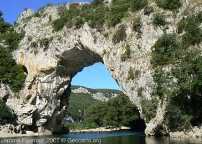
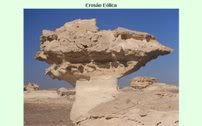
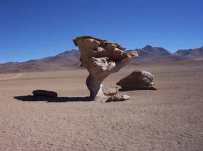
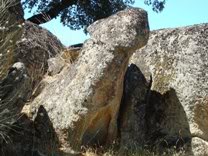

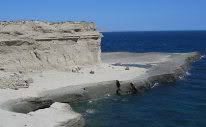 />
/>
(PT) A cache
Para reclamar o "found" terão de ir ás coordenadas para obter informações e responder-me via e-mail ás seguintes questões:
1 - Qual a altura (em metros) da Pedra do sapo desde o seu apoio até ao topo?
2 - Na parte de trás da pedra existem outras formas provocadas pela erosão, descreva-me o que vê.
3 - Na sua opinião, qual o tipo de erosão que provocou a formação desta pedra? Justifique a sua resposta.
Após minha autorização pode fazer o "found".
Serão removidos os "founds" não autorizados
DIVIRTAM-SE
(EN) The cache
To claim a "found" will have to go to the coordinates for information and answer me by e-mail with the following questions:
1 - What is the height (in meters) from the Stone toad their support to the top?
2 - On the back of the stone there are other ways caused by erosion, describe to me what you see.
3 - In your opinion, what type of erosion that led to the formation of this stone? Justify your answer.
After my authorization may make "found".
Will remove the "founds" unauthorized
Have fun
Additional Hints
(Decrypt)
(CG)N crqen rapbagen-fr á snpr qn rfgenqn, cryb dhr snpvyvgn n fhn ivfvgn.
(RA)Gur fgbar fgnaqf ng gur fvqr bs gur ebnq. Jvyy snpvyvgngr lbhe ivfvg